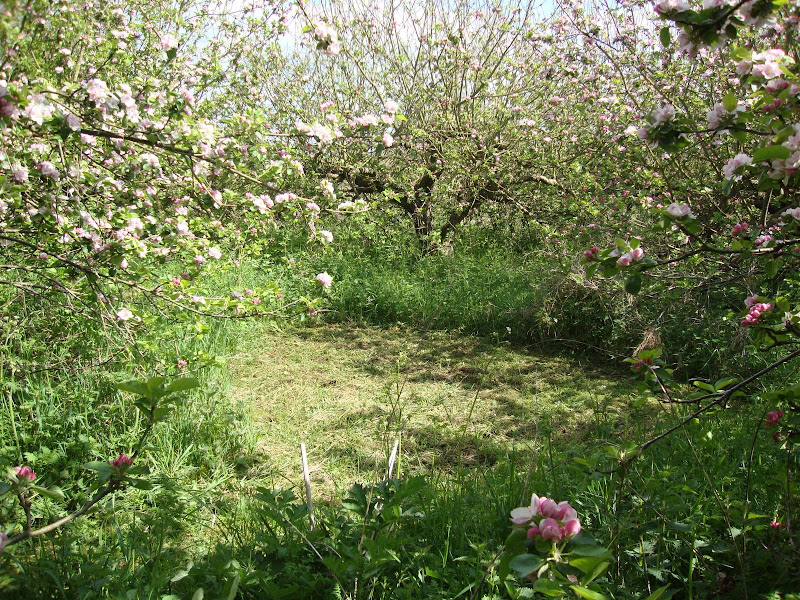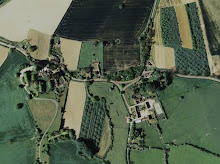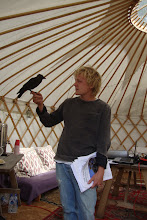
Recently I accompanied two ecologists from the Gloucestershire Wildlife Trust, along with Tim Field (Daylesford Environmental Scientist) and John Field (Water Vole Officer, no relation!) to look for water voles on the River Evenlode. One of the main areas we were inspecting was a wetland ecosystem beside the river that has recently been created by Tim on behalf of Daylesford Organic. The project has already looked at several Cotswold rivers recently and is part of a nationwide scheme to help reverse disastrous recent declines in the mammal.

The highlighted area is the wetland reserve, photographed in May 2009. The Evenlode is visible as a thin line passing down through it. Until quite recently this water-meadow was very 'horse sick' - that is to say it had been heavily overgrazed by horses. Two years ago the culverts, ditches and pond (visible as lighter brown marks) were added using a JCB with valves to allow the water levels to be adjusted. Over the winter months the area is flooded, providing valuable habitat for migrant waders and waterfowl as well as flood alleviation for people living up- and downstream. In the later summer and autumn the regrowth is enjoyed by Gloucester cattle, an old breed hardy enough to handle rough grazing land.

Already a number of key meadow and wet meadow species have emerged in the sward, including meadow foxtail, marsh thistle, common knapweed, marsh woundwort and meadowsweet. The ecologists suggested that the sward could be further enhanced if a hay cut was taken off the site, followed by a transfer of wet hay from the fantastic wet meadows at Greystones Farm Widllife Trust reserve near Boughton-on-the-Water. This would provide seed from some of the rarer species (e.g. orchids and sedges) that are unlikely to naturally recolonise.


The main dyke and surrounding marsh. Exposed soil and algal blooms betray the young age of the water feature, but it will already have been colonised by many invertebrates, particularly dragonflies and damselflies. A pair of Lapwing were diving and calling over the marsh and perhaps had a nest nearby or were prospecting the site.

We looked for water vole latrines as the only sure fire way of confirming their presence (apart from spotting one obviously!). There are a number of secondary clues that can be used for further evidence such as,
1) their burrows - BUT can be old and uninhabited or confused with the brown rat's
2) piles of chewed grasses and reeds - particularly yellow flag iris - BUT also displayed by bank and field voles so unreliable.
Overshading of the riverbanks by trees and bushes has made many river banks unfavourable for the water vole, combined with the other big factor, American Mink. These hardcore predatory mammals are often foolishly released from farms into the wild by so-called 'animal rights protesters' (ha!). Unfortunately they have quite a taste for the water vole. This stretch of the river looked like quite good habitat so mink are probably why we didn't find any.

A mallard's nest in an old coppiced willow. Is this an unusually large clutch?

Otter spraint and footprints on the riverbank. They have very large territories (40 miles!) so it may not live nearby. The spread of the invasive signal crayfish may well have helped otters recolonise much of the country. A large contributor to their decline were the endocrine disrupting chemicals (EDCs) used as agricultural pesticides that accumulated in the food chain from the 1950s until recently. These are now banned and otters are doing well.

















